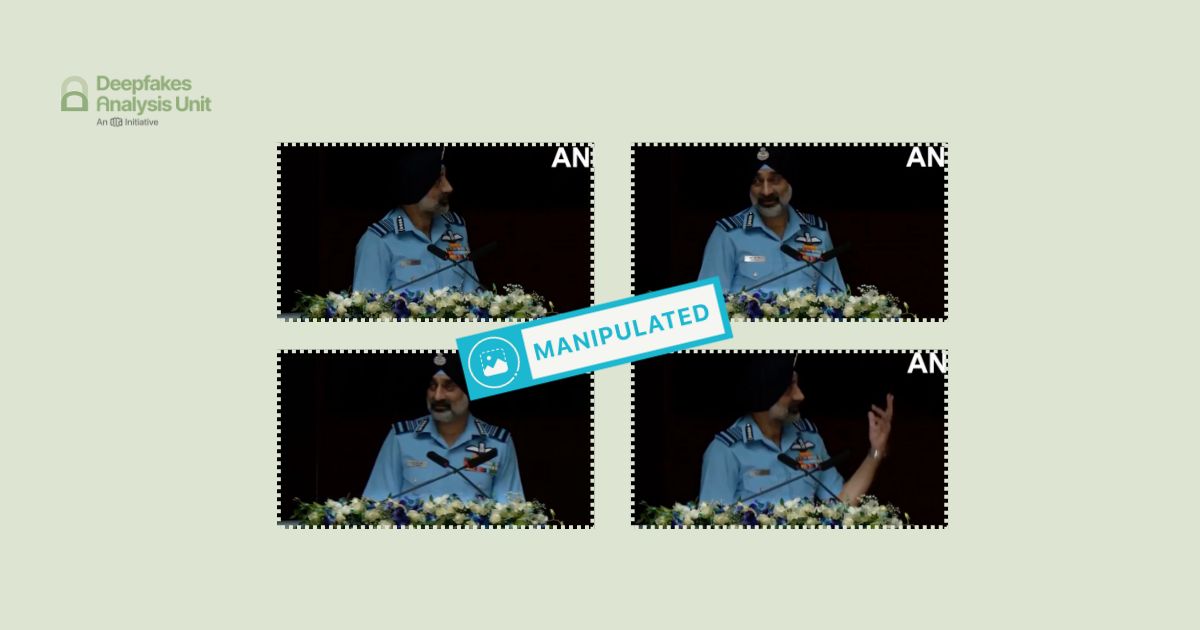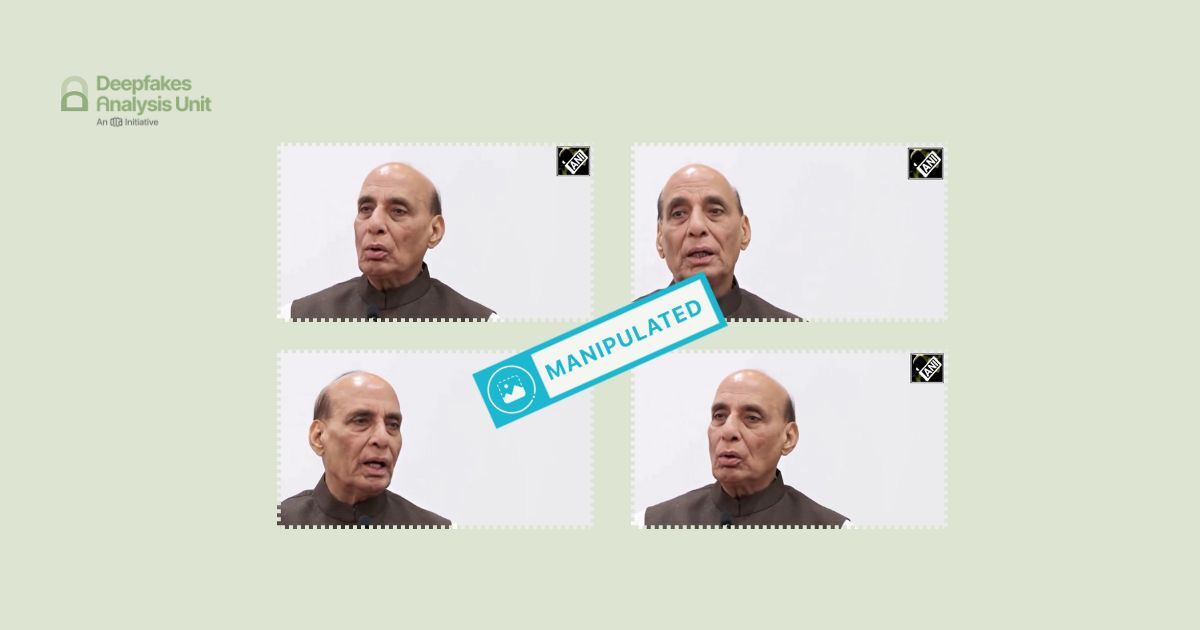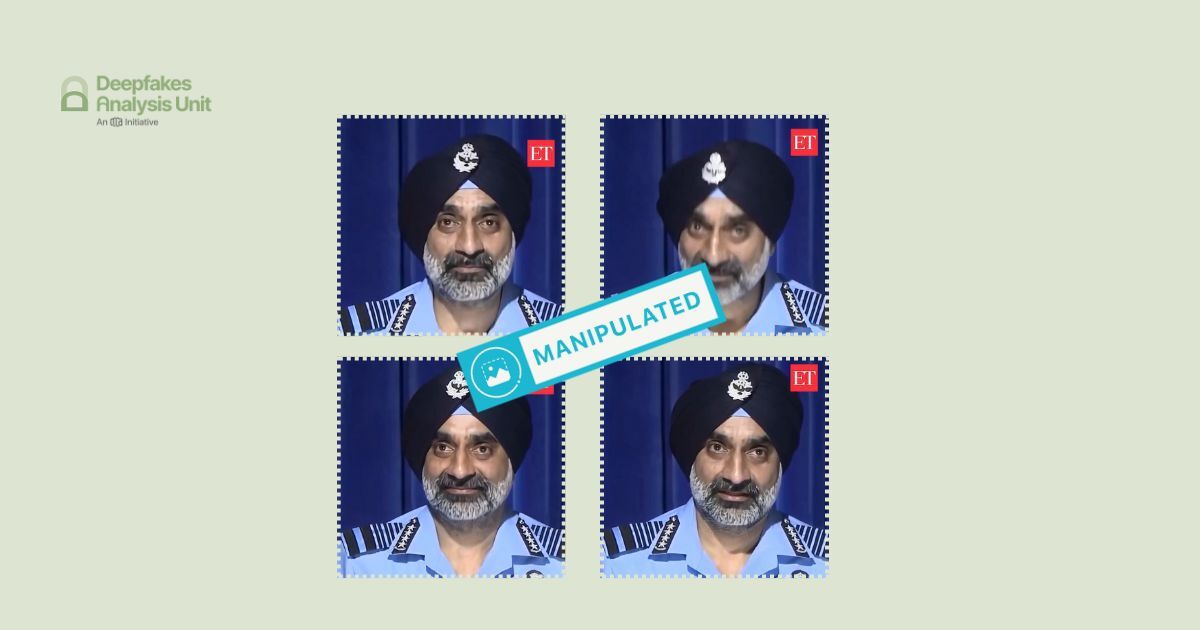The Deepfakes Analysis Unit (DAU) analysed a video that apparently shows Air Chief Marshal Amar Preet Singh, India’s Chief of Air Staff, supposedly making a statement about India having lost six jets and one Heron drone to Pakistan. After putting the video through A.I. detection tools and getting our expert partners to weigh in, we were able to conclude that an A.I.-generated audio clip was spliced with real audio to manipulate the video.
The one-minute and 53-seconds video in English was escalated to the DAU by a fact-checking partner for analysis. The video was posted from several accounts on X, formerly Twitter, although with different accompanying text. One such account with the display name of “The Whistle Blower” posted the video on Aug. 9. However, the video is not visible on the account timeline, anymore.
The aforementioned account was created about two years ago and has a blue checkmark, which indicates that it has an active premium subscription on X. The profile details indicate London as the account location. However, we don’t have any evidence to suggest that this suspicious video originated from this account or another.
The fact-checking unit of the Press Information Bureau (PIB), which debunks misinformation related to the Indian government recently posted a fact-check from their verified handle on X, debunking the video attributed to the air chief marshal.
The air chief marshal is captured in a medium close-up in the video. He appears to be standing at a podium decorated with flowers, addressing an audience as two microphones are placed in front of him. For the first 23-seconds of the video only his profile is visible as he seems to be looking at something to his left while speaking. For the rest of the video his head and gaze shift in different directions, including downwards as if reading from something.
The overall video quality is rather poor. The air chief marshal’s backdrop is all black. An arrangement of letters vaguely resembling the logo of ANI, an Indian news agency, is visible in the top right corner of the video frame.
It is difficult to discern the synchronisation between his lip movements and the audio track for the first 23-seconds of the video. However, for the remaining duration, but for a three-second segment, his lip movements seem fairly aligned with the audio. In that particular segment, a lag between the audio and the video track is noticeable and his eyes appear to blink unnaturally as well.
On comparing the voice attributed to the air chief marshal with his recorded videos available online, we noticed a striking similarity in the voice, diction, and overall delivery but for that three-second segment, which sounds scripted with no change in tone or pitch. Static noise can be heard throughout the video and it grows particularly louder in the aforementioned segment.
We undertook a reverse image search using screenshots from the video and traced the air chief marshal’s clip to this video published on Aug. 9, 2025 from the official YouTube channel of ANI. The clothes and body language of the air chief marshal in this video and the one we reviewed are identical.
We noticed that the backdrop in the video we traced is not black throughout as is the case in the doctored video. A wooden panel and a plain dark wall or screen above it also make up the backdrop for a good part of the source video, which is almost an hour long, and with that backdrop the lighting also gets better. It appears that a clip has been lifted from the segments featuring the darker backdrop and used to create the manipulated video.
In the source video, the ANI logo appears in the top-right corner of the video frame, and a YouTube logo is also visible in the lower-right corner. The location of the air chief marshal’s speech, his name and designation, are conveyed through text graphics in white, which appear in the initial few seconds of the video in the top-left and lower-third of the frame, respectively.
None of the other subjects filmed in the source video feature in the doctored video. The logo in the doctored video which looks similar to the ANI logo is different from the original ANI logo in terms of design. That logo, as seen on their official website and social media accounts, comprises an image of a microphone and emblazoned on it is the acronym for the organisation’s name—ANI—in white set against a black backdrop, bound by a white border.
The language in the source video is mostly English with a few Hindi words. All the words heard in the doctored video but for those in the three-second segment, which we pointed to above, can be heard in the source video as well. Static noise is present in the source video too.
The video being addressed through this report is similar to several videos that the DAU has debunked in the wake of the recent military escalations between India and Pakistan. Most such videos peddle a false narrative about India’s supposed loss of military equipment and personnel to Pakistan. These manipulated videos have typically been created by splicing A.I.-generated audio with original audio and video tracks of top Indian military officials and ministers of the Indian government.
Shared below is a table that compares the audio track from the doctored video with parts of the audio track from the original video featuring the air chief marshal. We want to give our readers a sense of how similar the audio tracks are and how that can be misleading. We, of course, do not want to give any oxygen to the bad actors behind this content.
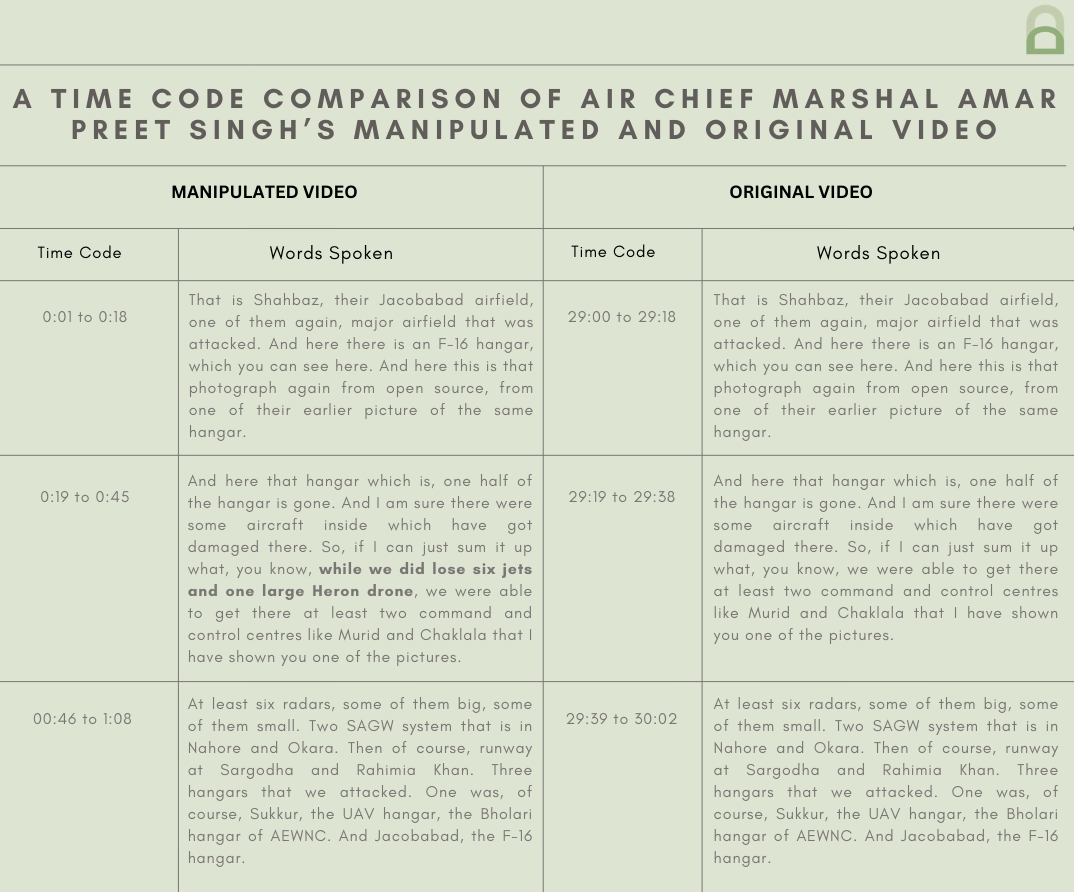
To discern the extent of A.I. manipulation in the video under review, we put it through A.I. detection tools.
The voice tool of Hiya, a company that specialises in artificial intelligence solutions for voice safety, indicated that there is a two percent probability of the audio track in the video having been generated or modified using A.I.

Hive AI’s deepfake video detection tool highlighted several markers of A.I.-manipulation in the video track. However, their audio detection tool indicated that the entire audio track is “not A.I.-generated”.
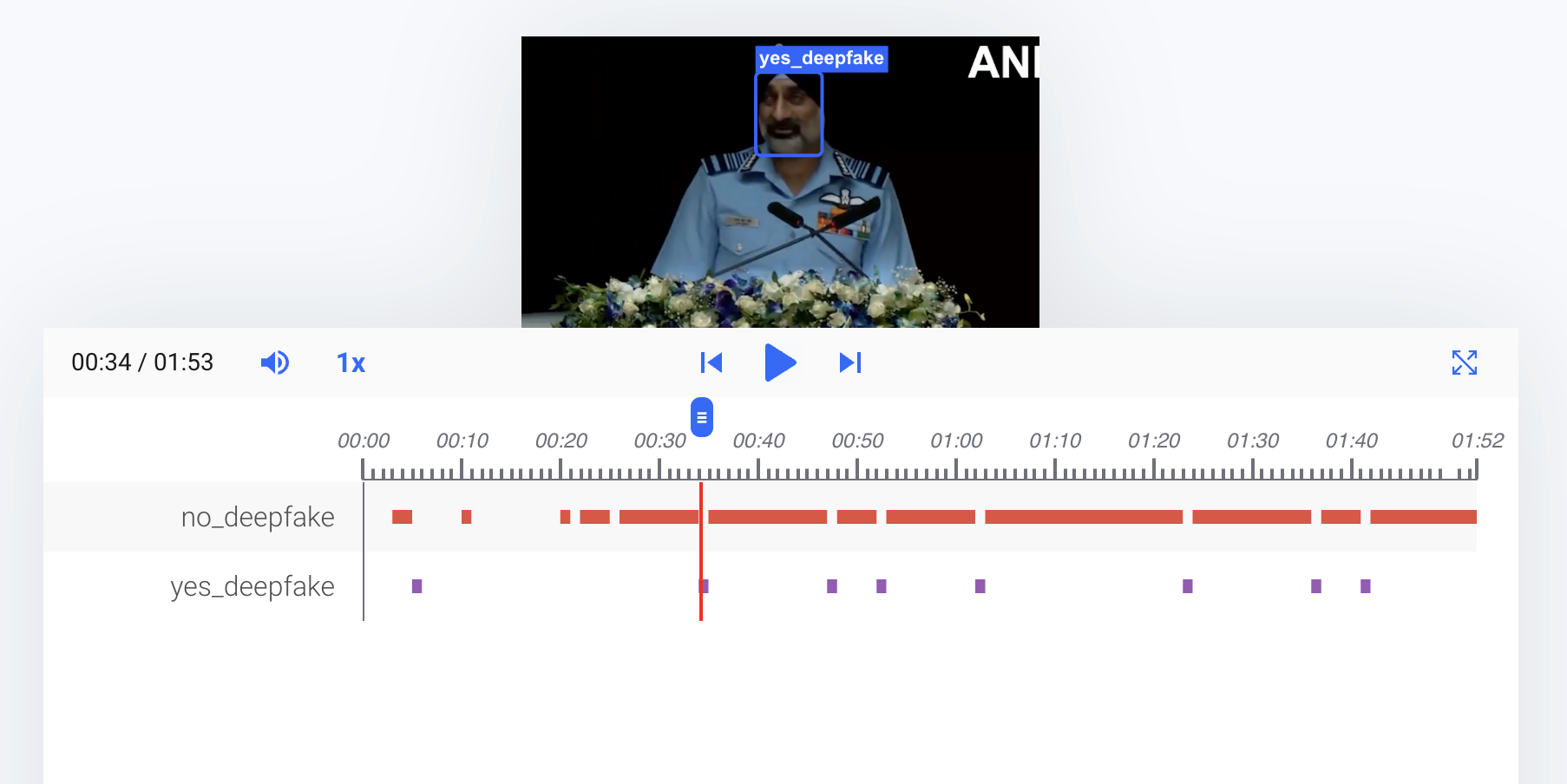
We also ran the audio track through the A.I. speech classifier of ElevenLabs, a company specialising in voice A.I. research and deployment. The results that returned indicated that it was “very unlikely” that the audio track used in the video was generated using their platform.
When we reached out to ElevenLabs for a comment on the analysis, they told us that they conducted a thorough technical analysis but were unable to conclusively determine that the reported synthetic audio originated from their platform.
To get further analysis on the video we reached out to ConTrailsAI, a Bangalore-based startup with its own A.I. tools for detection of audio and video spoofs.
The team ran the video through audio as well as video detection models. The results that returned suggested there was no manipulation in the video track, however, the team noted that the video frames were fairly dark. A.I.-manipulation was detected in a three-second segment in the audio track while the rest of the track seems to be real, the team added.
We would like to mention that the segment that they pointed to is the same one that we too pointed to above. That segment, as per ConTrails’ analysis, carries the following words: “while we did lose 6 jets and 1 large heron drone”.
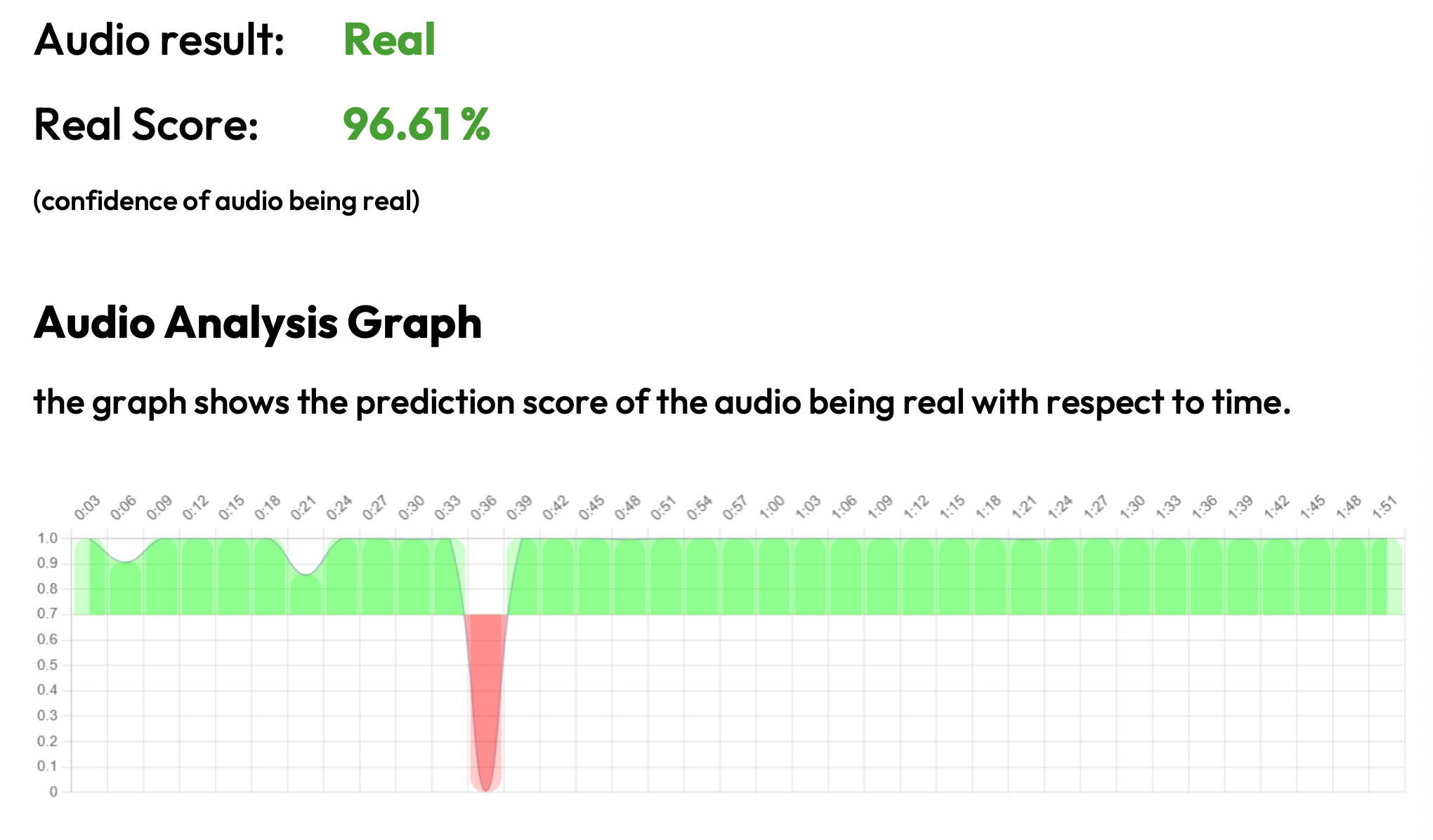
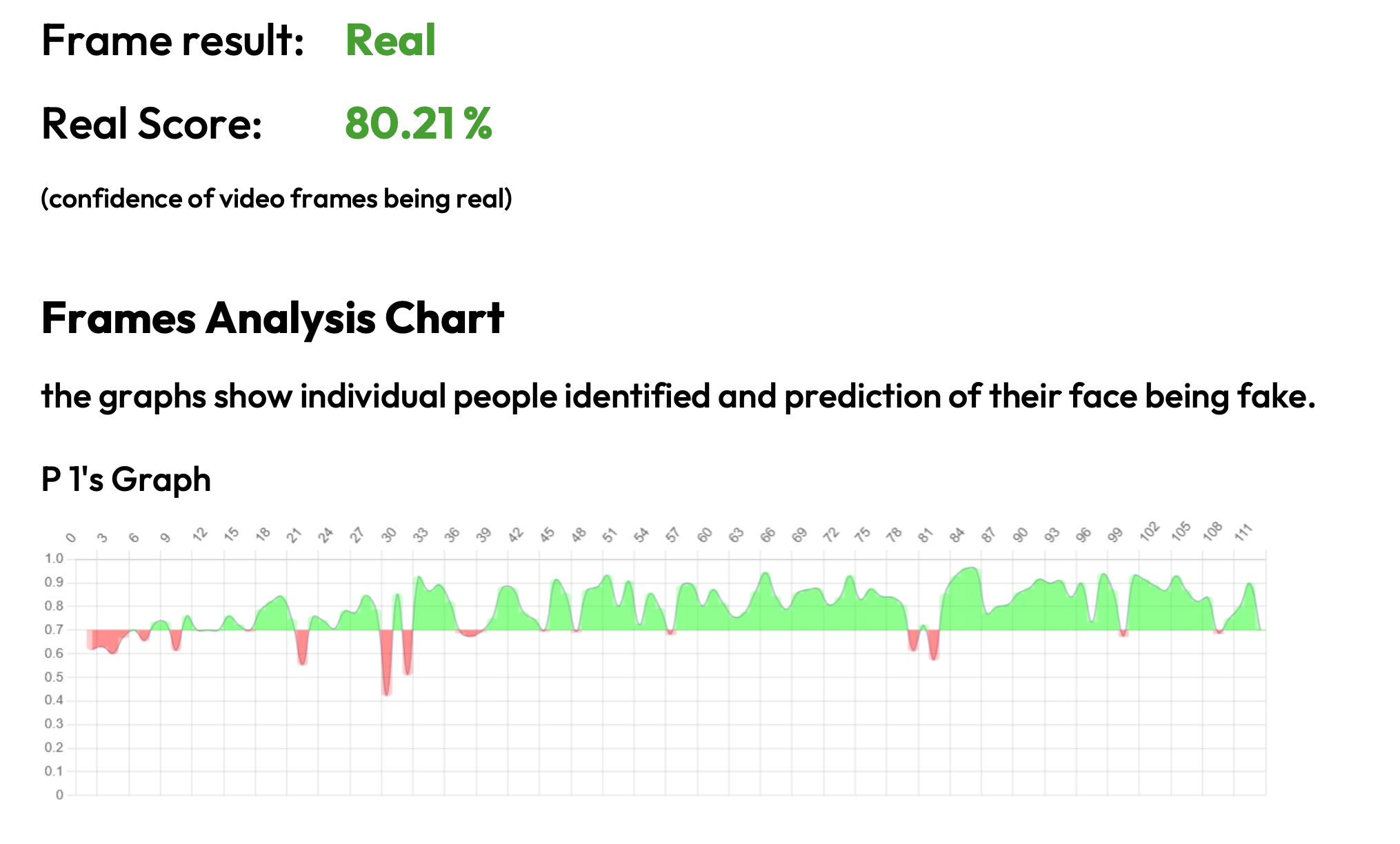
On the basis of our findings and expert analyses, we can conclude that synthetic audio was inserted in the real audio track with the air chief marshal’s video to peddle a false narrative about India losing jets and a drone in the recent India-Pakistan conflict.
(Written by Debraj Sarkar and Debopriya Bhattacharya, edited by Pamposh Raina.)
Kindly Note: The manipulated audio/video files that we receive on our tipline are not embedded in our assessment reports because we do not intend to contribute to their virality.
You can read below the fact-checks related to this piece published by our partners:
Video Of IAF Chief Admitting To Loss Of 6 Indian Jets In Op Sindoor Is Altered




